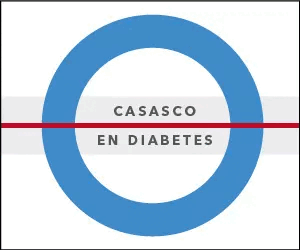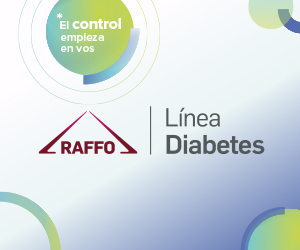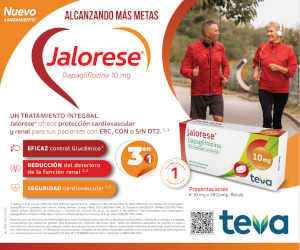Mini conference: Current and potential future treatment options for children in different stages of type 1 diabetes. Update on new therapies for pediatric diabetes
DOI:
https://doi.org/10.47196/diab.v55i3Sup.495Keywords:
diabetes, pediatricsAbstract
There is considerable heterogeneity within the clinical phenotype of type 1 diabetes: genetic susceptibility is complex, progression rates differ markedly, as does the efficacy of therapeutic interventions. New prevention strategies should use biomarkers to lead to personalized combination therapies analogous to the approach used in pediatric oncology. It is well known that type 1 diabetes starts with autoimmunity, the detection of 2 or more persistent diabetes-associated antibodies (stage 1). Additional subclinical dysglycemia is termed stage 2, and manifest type 1 diabetes is termed stage 3. Both genetic and immunologic parameters allow early detection in children and adolescents. Because 9 out of 10 affected children come from families without other family members with type 1 diabetes, screening approaches provide an opportunity for preservation of residual insulin-producing beta cell function.
Studies of the psychological burden of screening procedures and results showed that the vast majority of families were able to live relatively unburdened by the knowledge of their child's increased diabetes risk after a short period of time. The GPPAD research network is investigating primary prevention with oral insulin (POINT study) or probiotics (S1NTIA study). The European research network INNODIA is developing a standardized study protocol ("master protocol") to accelerate the investigation of new single agents and combination therapies from the age of 5 years. Secondary prevention approaches are showing promising results in initial pilot studies to prolong the remission phase or delay disease onset in at-risk populations. Intensified insulin therapy with differential substitution of basal- and bolus insulin is the gold standard also for children with type 1 diabetes. The different absorption profiles and half-lives of insulin preparations allow insulin therapy to be tailored for the individual patient. Ultra-rapid insulin analogues show improved postprandial glucose levels, while second-generation basal analogues are associated with less hypoglycemia and reduced events of hyperglycemia and ketosis as a surrogate marker of a high risk for DKA.
New parameters like time in range and time below range suitable for identifying high glycemic variability as risk factor for severe hypoglycemia complement the HbA1c targets and the ambulatory glucose profile in a shared decision making on therapeutic adjustments between the diabetes team and families with a child with diabetes. Automated insulin delivery as a hybrid closed loop or dosing advice using artificial intelligence are becoming a clinical reality. However, diabetes education as a team approach, defining clear targets with outcomes evaluated in multinational registries like SWEET remain important for shaping the future of pediatric diabetology.
References
I. Battelino T, Danne T, Bergenstal RM, Amiel SA, Beck R, Biester T, Bosi E, Buckingham BA, Cefalu WT, Close KL, et al. Clinical targets for continuous glucose monitoring data interpretation: recommendations from the International Consensus on Time in Range. Diabetes Care. 2019 Aug;42(8):1593-1603.
II. Bergenstal RM, Nimri R, Beck RW, Criego A, Laffel L, et al.; FLAIR Study Group. A comparison of two hybrid closed-loop systems in adolescents and young adults with type 1 diabetes (FLAIR): a multicentre, randomised, crossover trial. Lancet. 2021 Jan 16;397(10270):208-219.
III. Gerhardsson P, Schwandt A, Witsch M, Kordonouri O, Svensson J, Forsander G, Battelino T, Veeze H, Danne T. The SWEET Project 10-year benchmarking in 19 countries worldwide is associated with improved HbA1c and increased use of diabetes technology in youth with type 1 diabetes. Diabetes Technol Ther 2021 Jul;23(7):491-499
IV. Haller MJ, Jacobsen LM, Posgai AL, Schatz DA. How do we move type 1 diabetes immunotherapies forward during the current COVID-19 pandemic? Diabetes 2021 May;70(5):1021-1028.
Downloads
Published
How to Cite
Issue
Section
License
Copyright (c) 2021 on behalf of the authors. Reproduction rights: Argentine Diabetes Society.

This work is licensed under a Creative Commons Attribution-NonCommercial-NoDerivatives 4.0 International License.
Dirección Nacional de Derecho de Autor, Exp. N° 5.333.129. Instituto Nacional de la Propiedad Industrial, Marca «Revista de la Sociedad Argentina de Diabetes - Asociación Civil» N° de concesión 2.605.405 y N° de disposición 1.404/13.
La Revista de la SAD está licenciada bajo Licencia Creative Commons Atribución – No Comercial – Sin Obra Derivada 4.0 Internacional.
Por otra parte, la Revista SAD permite que los autores mantengan los derechos de autor sin restricciones.

































